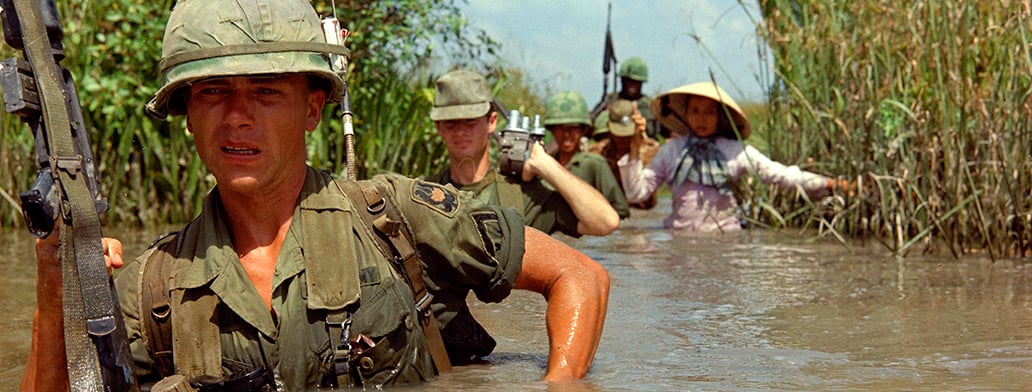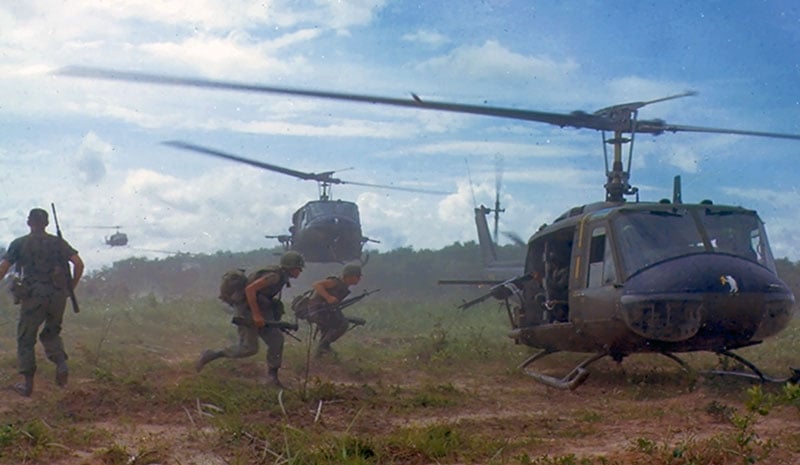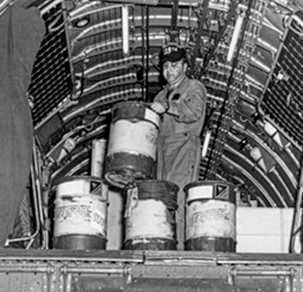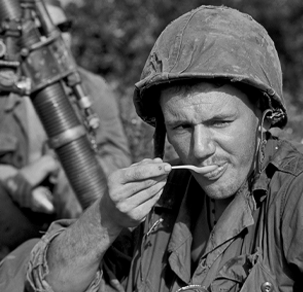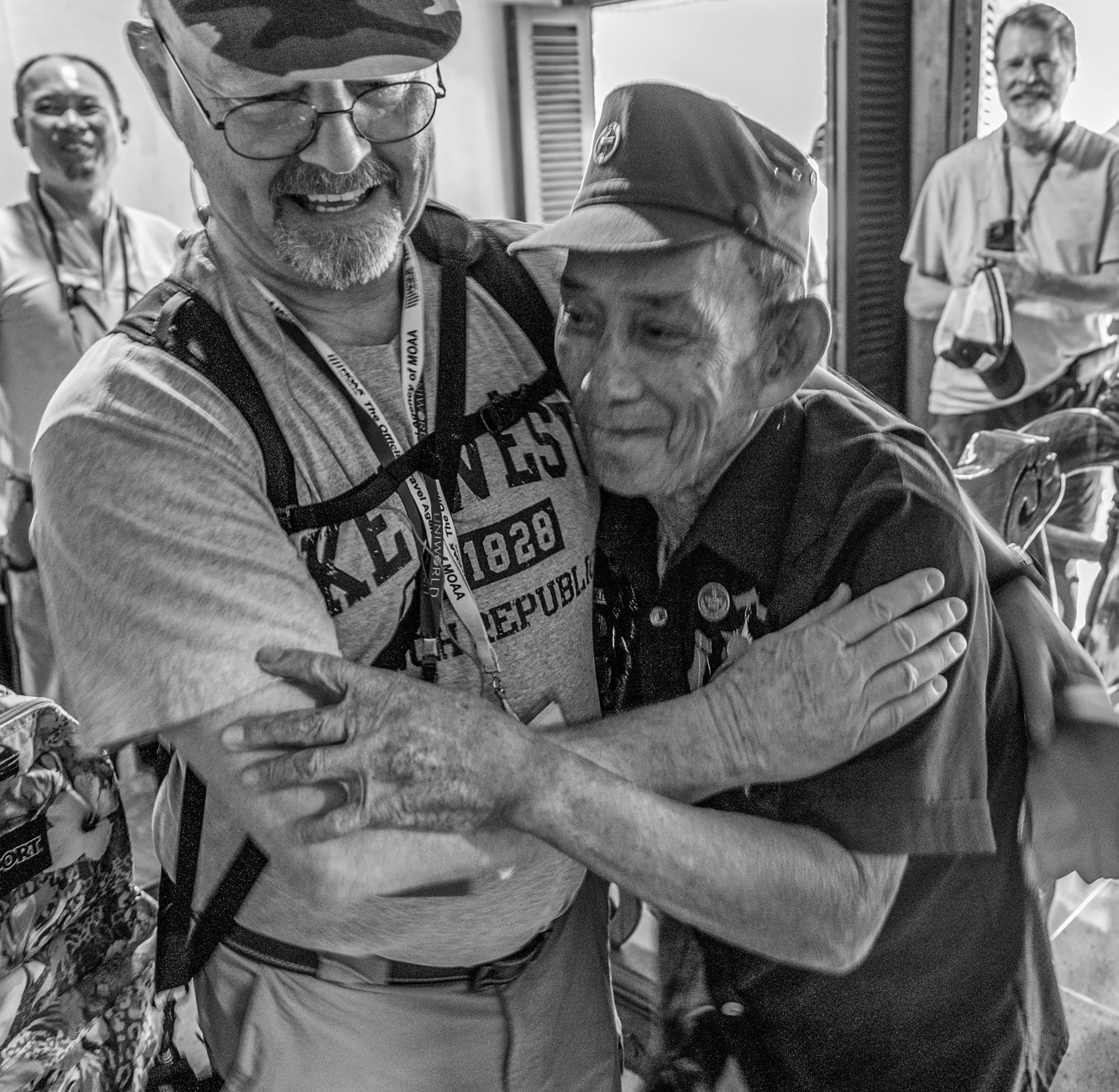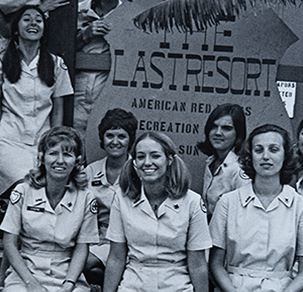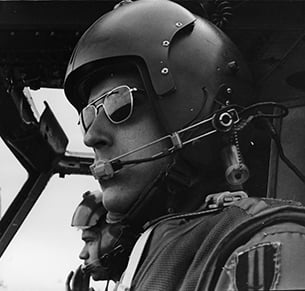AUGUST 1945
Following the defeat of Japan to end World War II, France moves to reassert its control over Indochina, which had become a French colony in 1887.
JULY 1946
France proposes granting
Vietnam limited self-government. Ho Chi Minh rejects the proposal and, with his organization, the Viet Minh, embarks on a guerrilla war against the French.
AUG. 4, 1953
President Dwight D. Eisenhower tells the American people the situation in French Indochina is “very ominous for the United States” and asks Congress for $400 million in aid for the French.
MAY 7, 1954
After 55 days of heavy fighting, Viet Minh forces capture the French command post at Dien Bien Phu, and the French commander orders his troops to cease fire. The defeat breaks any will France has to continue the war.
JULY 1954
The Geneva Accords establish two countries — North and South Vietnam. Within two years, elections are to be held to unify Vietnam under a single democratic government. South Vietnamese President Ngo Dinh Diem, however, refuses to sign the accords.
MAY 1959
North Vietnamese forces begin work on a route through Laos and Cambodia to supply and support ongoing guerrilla attacks against South Vietnam. This becomes known as the Ho Chi Minh Trail.
JULY 8, 1959
Two U.S. advisors are killed and several more injured in an attack on their living quarters near Saigon. They’re the first U.S. personnel killed in South Vietnam.
NOVEMBER 1960
Diem faces open rebellion from opponents, communists, and veterans of the resistance against France. He asks for more U.S. aid.
MAY 1961
President John F. Kennedy sends helicopters and 400 Green Berets to South Vietnam as military advisors but also authorizes them to conduct covert operations against what’s now called the Viet Cong in North Vietnam and Laos.
JANUARY 1962
U.S. aircraft begin spraying the highly toxic herbicide Agent Orange over rural areas of South Vietnam as part of Operation Ranch Hand. Its danger was not known at the time.
SEPTEMBER 1963
The Kennedy administration begins pulling back its support of the increasingly unpopular Diem.
OCT. 11, 1963
Kennedy signs a memorandum detailing a plan to continue training South Vietnamese personnel but to withdraw U.S. troops from Vietnam by 1965.
NOV. 1, 1963
In a U.S.-backed military coup, Diem and his brother are assassinated.
AUG. 2-5, 1964
A U.S. surveillance vessel is attacked by North Vietnamese torpedo boats 28 miles off the coast of North Vietnam in the Gulf of Tonkin. President Lyndon B. Johnson orders retaliatory air strikes against two North Vietnamese naval bases and an oil facility. Two U.S. aircraft are shot down in the attack. The pilot of one of them becomes the first American to be taken prisoner by North Vietnam.
AUG. 7, 1964
In response to the incident, Congress passes the Gulf of Tonkin Resolution, giving Johnson the authority to “take all necessary measures, including the use of armed force” in southeast Asia.
MARCH 2, 1965
Operation Rolling Thunder — a sustained bombing campaign aimed at North Vietnamese airfields, power plants, munitions storage sites, and the Ho Chi Minh Trail — begins.
MARCH 1965
Two battalions of Marines land at Da Nang, becoming the first U.S. combat troops in Vietnam.
AUG. 17, 1965
A Viet Cong deserter alerts U.S. Marines that an attack is imminent at Chu Lai. American leaders send 5,500 Marines in a preemptive strike — the first U.S. ground offensive of the war. The U.S. earns a big victory in the six-day engagement.
JANUARY 1966
The Senate Foreign Relations Committee begins hearings questioning the legality of U.S. military operations in Vietnam.
APRIL 1967
War protests take place in New York, San Francisco, and Washington, D.C.
NOVEMBER 1967
Communist forces attack U.S. and South Vietnamese positions in the Battle of Dak To. About 1,800 U.S. troops are killed.
JAN. 30, 1968
Viet Cong and North Vietnamese armies team up for simultaneous attacks on all U.S. bases plus 110 cities and towns in South Vietnam. Even the U.S. Embassy in Saigon is invaded. The coordinated attacks become known as the Tet Offensive.
FEB. 17, 1968
The U.S. ends its deadliest week of the war to date, with 543 American casualties.
MARCH 1968
U.S. and South Vietnamese troops are finally successful in clearing Viet Cong guerillas from Hue and Saigon.
MARCH 16, 1968
On a “search-and-destroy” operation to locate enemy hideouts, a U.S. Army unit massacres more than 500 civilians in the village of Mai Lai.
MARCH 31, 1968
In a nationally televised speech, President Johnson says he’s halting bombing in Vietnam north of the 20th parallel and proposes starting peace talks.
NOV. 5, 1968
Richard Nixon is elected president after making campaign promises to end the draft. He pledges a gradual troop withdrawal.
JAN. 25, 1969
Nixon appoints Henry Cabot Lodge as chief U.S. negotiator for peace talks in Paris.
DEC. 1, 1969
The Selective Service conducts its first draft lottery since WWII.
FEBRUARY 1970
National Security Advisor Henry Kissinger and North Vietnam’s Le Duc Tho secretly resume peace negotiations in Paris.
APRIL 1970
U.S. and South Vietnamese forces begin attacking communist bases in the officially neutral country of Cambodia.
MAY 4, 1970
National Guardsmen open fire on anti-war demonstrators at Kent State University in Ohio, killing four and wounding nine.
JUNE 1970
In an effort to reassert control over the war effort, the U.S. Senate repeals the Gulf of Tonkin Resolution and bans American combat troops in Laos and
Cambodia.
JANUARY 1971
South Vietnamese troops invade Laos in an attempt to cut off the Ho Chi Minh Trail. Even with U.S. support, they suffer heavy losses and are forced to retreat.
MARCH 1972
North Vietnam launches an enormous effort from bases in Laos that becomes known as the Easter offensive, attacking on three fronts. South Vietnamese forces are forced away from border posts in the country’s central highlands.
DECEMBER 1972
Le Duc Tho rejects the terms of a revised peace agreement. In hopes of intimidating North Vietnam into accepting the agreement, Nixon orders Operation Linebacker — an intense aerial bombing of Hanoi and Haiphong over the Christmas holidays.
JANUARY 1973
Kissinger and Le Duc Tho agree on a cease-fire in what comes to be called the Paris Peace Accords. Nixon suspends U.S. military operations in Vietnam. Over the next four months, North Vietnam releases 591 American prisoners of war in what is called Operation Homecoming.
MARCH 29, 1973
The final American combat troops leave South Vietnam. The Selective Service ends the draft, and the U.S. begins a transition to an all-volunteer military.
Sources: “The Illustrated History of the Vietnam War” by Andrew Wiest and Chris McNab, “The Vietnam War: Day by Day” by Leo Daugherty, Time magazine, The New York Times, The Washington Post, PBS, Politico, history.com, Office of the Historian of the U.S. State Department, UMass Boston’s Healey Library, Aspen Institute, vietnamwar50th.com, vietnamtheartofwar.com
Charles Apple is a visual journalist based in Georgia.
